
A Very Balkan Heresy
If a church is corrupt enough and gives little enough care to its adherents, at some point its followers will be tempted to follow something else.
This was the case in tenth century Bulgaria, where the Orthodox Church provided a breathtakingly rich pageantry full of jewel encrusted costumes, but gave little care to the everyday peasant required to fill the church coffers with taxes and attend church services in Greek, which the peasants did not understand or speak.
When the Bulgarian priest Bogomil offered an alternative, one that removed much of the hated degradation and extensive control structured to keep peasants in their “place” – it quickly gained a growing following.
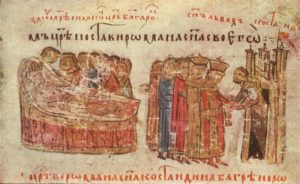
Speaking in the local Slavonic language, Bogomil did something Orthodox priests didn’t bother to do – he explained church doctrine in a way followers could understand. This in itself was uncomfortable, but Bogomil went even further. Disgusted by the excesses of the church, the only explanation he could come up with was that the church itself was inspired by Satan. That was the moment, for those in charge, that Bogomil went too far.
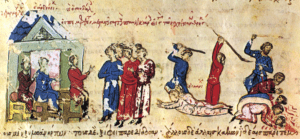
Gnostic teachings existed from the beginnings of the church. Many of these were dualist in nature – that is, a belief that good and evil both exist and have always existed. This makes sense to peasants with a strong background in the pagan religions that held sway before Christianity made its second run through the Balkan areas. Pagan gods were neither good nor evil, they were both; it was an approach that made sense. Bogomil adapted this to the Christian world mythos by linking evil to the act of creation.
According to Bogomil beliefs, God had two sons – Satanel and Michael. Satanel became evil and rebelled against God. He was cast down from the heaven and, lonely, created Adam from clay. Satanel tried everything to bring Adam to life but was unable to manage on his own. However, God – the always good, saw Satanel’s attempts and decided to help. He breathed into Adam and created his spirit.
This is how God and good created the spirit, but Satanel and evil created the body. Anything that came from the creation of the body was evil as well.
God knew that he had a role in bringing evil into the world, and so sent his son Michael to earth, where he was known as Jesus. Michael was able to defeat Satanel, in the process depriving him of his angelic suffix of -el and depriving him of his power. But Satan’s machinations were still processing and Michael was still murdered on the cross.
Thus the cross itself was a product of evil. The Old Testament, written before God sent his son to erase the world’s evil, was also evil. The church, which sprang from the evil deed of murdering the son of God on the cross was evil.
But the Lord’s Prayer, given directly by Michael on Earth as Jesus, was the most potent weapon against Satan.
The Bogomils translated their dualistic creation beliefs into very distinctive practices.
1) There were no special priests, teachers were elected from the community and did not attend special schools or training for their positions.
2) Churches, which developed from a worship of the evil cross, were not used. Prayers were given in homes or outside.
3) Marriage was not a sacrament.
4) The fasts required by the Orthodox church on Mondays and Fridays were rejected. They did continue fasting on Sundays, however.
5) Monasticism, a community of worshippers who lived together according to strict church rules and worshipped in churches according to the rules of the church was rejected; although there were male and female Bogomils (called “Perfects”) who lived ascetically and forswore sex and meat.
6) One of the most important pillars of the church, transubstantiation – or the physical conversion of wafer and wine into the body and blood of Christ, was completely rejected.
7) It was not Jesus who would execute the last judgment, but God himself.
8) All that which descended from Satan’s machinations due to the cross was evil, so all images of crosses are idols and veneration of saints and the cross was idolatry.
Bogomils also scoffed at earthly power – politics and wealth were not amongst the things they religiously valued. Adherents, called Babuni (superstitious ones) in many places, did not pay taxes, did not stay within the feudal system as serfs, and would not fight in wars of conquest for any nation. All of these things had been enforced upon them within the Orthodox church.

Of course, almost everything known about the Bogomil movement is only known through the records of those who persecuted them, but there were enough related and offshoot movements to offer a semblance of comparison. There is one known Bogomil book still in existence, which was thought to have been written before the 1190s in Bulgaria. The Secret Book: Liber Sancti Johannis, was seized in one of the Inquisitions meant to root out their heresy in France. As the Bogomils are thought to have been the direct ancestor of the Cathars in France, it is not out of the question that one of their manuscripts would have been uncovered there.
By 1211 the Bogomil sect had gotten to be too much for the Orthodox Church in Bulgaria and the Council of Trnovo pronounced anathema on them in front of Tsar Boril, who declared himself defender of the faith and vowed to root them out. Serbia, too, had begun to drive them out in the late 1190s.
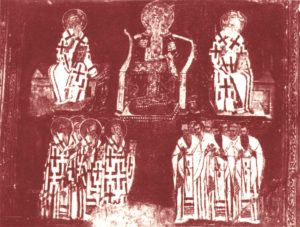
The only place Bogomils were able to find a modicum of peace was in the Banate of Bosnia, and this is where the historical record begins to get quite confusing. Although the Bogomils and the developing Bosnian Catholic Church were demonstrably not the same entity, a lack of firsthand historical evidence caused them to become conflated in later history. It also caused no end of headaches for the Bosnians, whose indifferent reaction to having a plurality of faiths within their realm caused the Catholic Hungarian Empire to throw about accusations of heresy which required crusades to stamp out – and incidentally would allow the Hungarians to seize some choice Bosnian properties.
Although the Bosnians repeatedly insisted on their loyalty to the Catholic Church, Bogomils were well known for hiding amongst Orthodox and Catholic religious communities – well acquainted with the teachings of the churches they were rejecting but acting evangelically for Bogomilism within them.
“I cannot deceive a Christian otherwise than pretending to be a monk; we call ourselves Christians and appear in every way to act as Christians do, and put forward the Holy Scriptures as our teaching,” Euthymius of the Periblepton Monastery, in a 1045 letter.
The deceitfulness of the heretics was one of the reasons continually given when advocating for a Bosnian Crusade.
It would take over 200 years, but eventually the Bosnian kings would succumb to the pressure to completely eradicate the Bogomils, as well as the Bosnian Catholic Church, when faced with the threat of an invading Ottoman army. After the Ottoman conquest of Bosnia, no records of Bogomils remained and it is believed that adherents, robbed of their religious grounding by the persecution of King Stjepan Tomas, converted to Islam en masse.
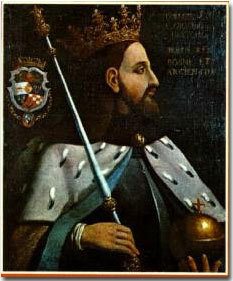
Later, when tantalizing clues of two sects of Christianity gave scholars more questions than answers, the Bogomils and Bosnian Catholics would be assumed to be one and the same. The haunting gravestones scattered throughout Bosnia and Herzegovina, the stećci, were assumed to have been of Bogomil origin, although their sometime use of a cross shape and Christian religious motifs were the antithesis of Bogomil belief.
But hidden away, unremarked, a small group calling themselves the Paulicians may be the modern descendants of the Bogomils and hold answers to questions of belief.
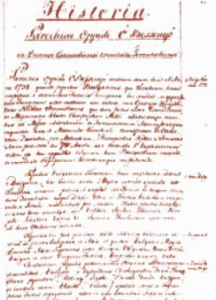
The Banat Bulgarians, also called Paulicians were expelled from Ottoman-controlled northwest Bulgaria in 1688. They nominally converted to Catholicism and were welcomed into the Hungarian empire in the area of what is now Serbia and Romania. They still speak a dialect of Bulgarian, although it is greatly influenced by local vernacular, and their literature and alphabet are based on a Paulician dialect and use a Latin alphabet.
There was a separate sect prior to and during the time of the Bogomils called the Paulicians, and they were greatly influential on the development of Bogomil beliefs. So it is entirely possible that the Banat Bulgarians are cousins of the extinguished heretical sect rather than descendants. Either way, they are a living history of a heresy that shaped the destiny of Bosnia before it entirely disappeared.
- June 22, 2020
- Bosnia and Herzegovina

